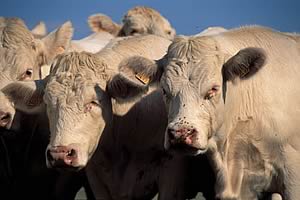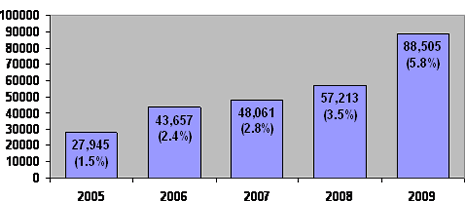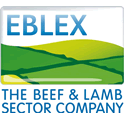 |
|||||||||
|
|||||||||||||||||||
|
|
Take Care to Avoid Beef Finishing Age Creep Beef producers must be careful to avoid age creep in their finishing animals if they are to maximise both productivity and beef quality, advises EBLEX – the industry body for beef and lamb levy payers – following its analysis of the latest annual BCMS slaughter data.
Alongside the progressive decline in overall slaughterings in recent years, the BCMS records show the number of cattle slaughtered at between 30 and 36 months of age in Great Britain has more than tripled following the change in the Over Thirty Month rule in early 2006. As a result the proportion of 30-36 month olds in the prime cattle slaughter mix has risen from around 1.5% in 2005 to nearly 6% in the past year (Figure). That this change in the age profile is not merely a reflection of the fall in young bull slaughterings since 2005 is confirmed by the virtually identical increase in the proportion of upper age bracket animals when stock under 15 months of age are removed from the overall figures. Figure: Cattle Slaughterings at 30-36 Months of Age (as a proportion of prime beef *) * Percentage of all BCMS recorded deaths from 9 -36 months of age Finishing cattle at older ages is known to be costly in feed resources as larger animals require a higher proportion of their daily intake for maintenance. Older stock also present an increased risk of both over-fatness and over-weight penalties. Equally, eating quality declines steadily with the build-up in connective tissue. While it is reasonable practice to keep older animals a little longer to achieve the right level of finish, EBLEX stresses that marketing stock at less than 30 months – and preferably between 18 and 24 months – offers the greatest economic and environmental efficiency in most cases. It points out that there are no breeds or crosses routinely used in England that can’t make a market specification at this age if fed sufficiently well. Advice on reducing finishing periods to maximise returns from younger cattle is provided in the interactive Beef Action for Profit resource available free of charge to English levy payers at www.eblex.org.uk.
|
||||||||||||||||||

|
|
||||||||||||||||||
| home | agri-services | pedigree
pen | news | dairy | beef | machinery property | organisations | site map |
|||||||||||||||||||


